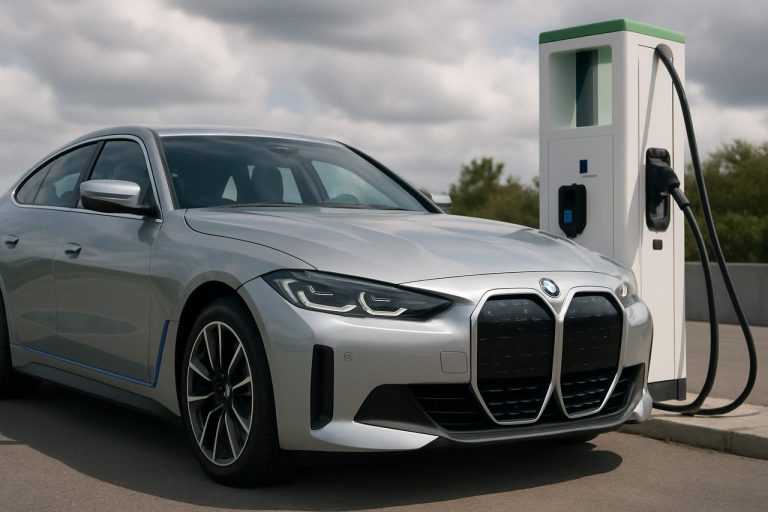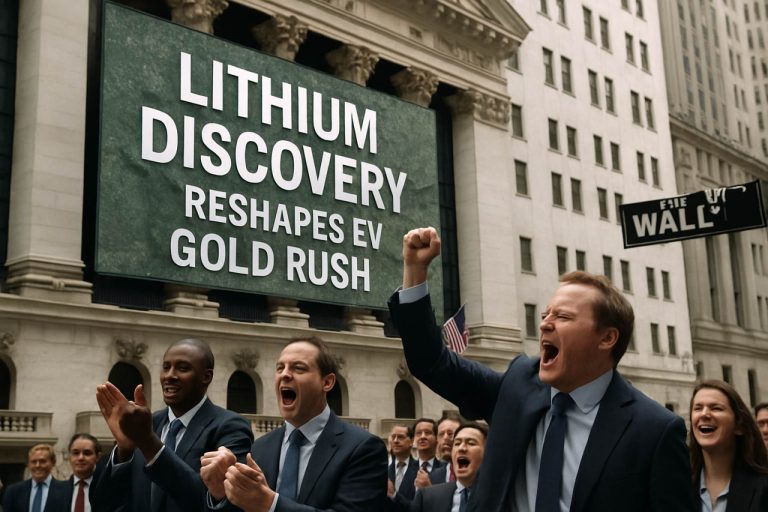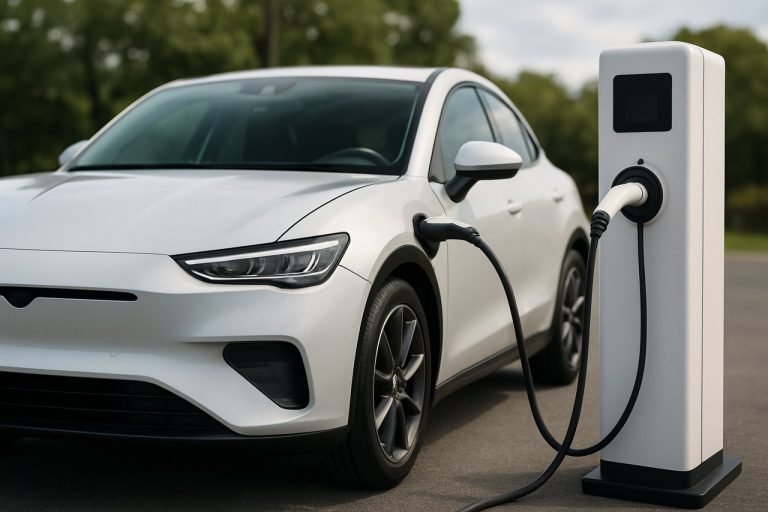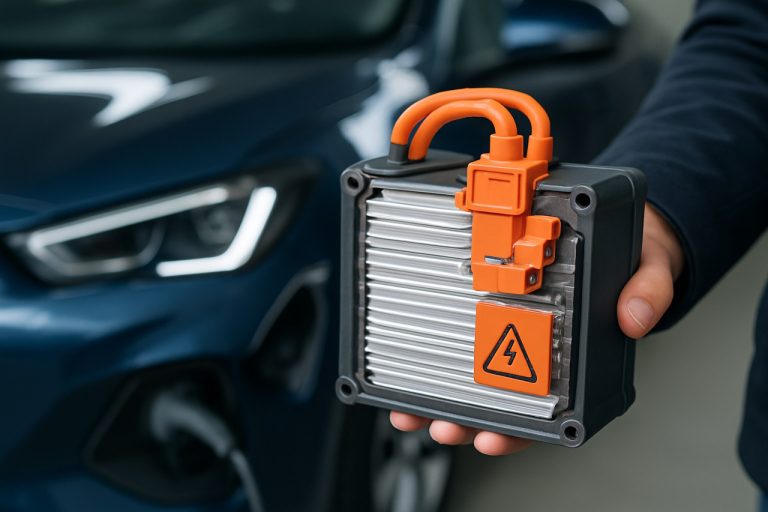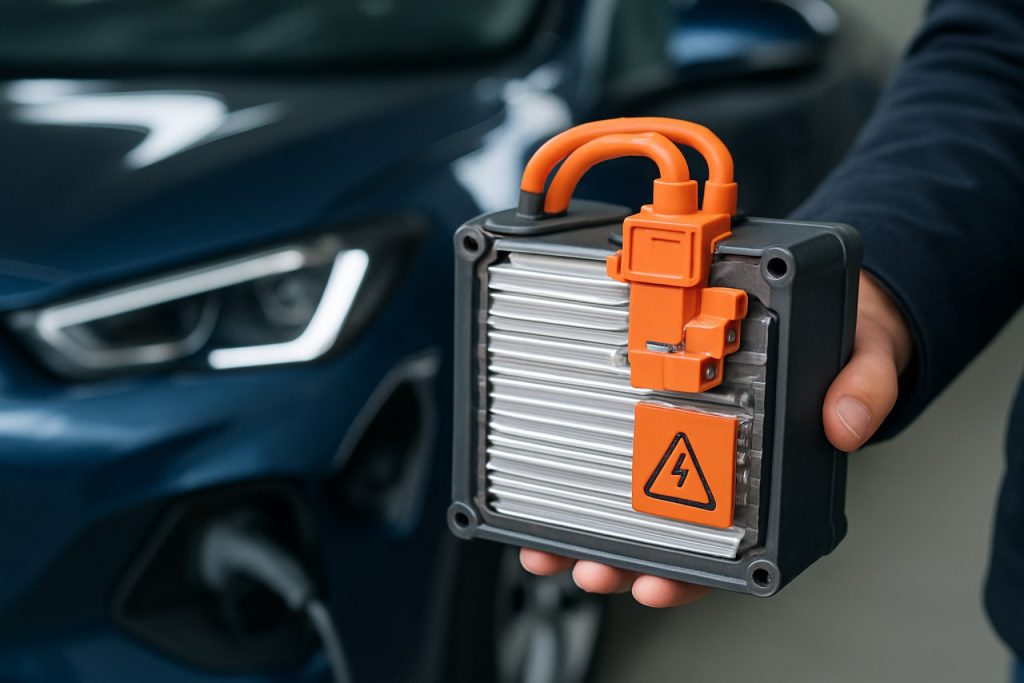
- Lithium-metal battery technology promises to significantly extend electric vehicle (EV) battery lifespan and driving range.
- These batteries use pure lithium metal anodes, enabling nearly twice the energy density of conventional lithium-ion batteries.
- Longer-lasting batteries reduce costs for drivers, decrease battery waste, and improve overall EV reliability.
- Major automakers and battery manufacturers are heavily investing in this innovation, with real-world prototypes already being tested.
- Safer designs address risks like dendrite formation, enhancing both performance and battery safety.
- Adoption of lithium-metal batteries could accelerate a global shift to sustainable, durable, and economical electric transportation.
A nondescript laboratory hums with anticipation as engineers prepare to pry open the mysteries that could reshape how we move. What’s at stake? The soul of the electric vehicle: its battery. While billions pour into the world’s race for clean transportation, a fresh wave of innovation now promises to transform both your driving experience and the longevity of your car.
Battery packs power every leap forward in EV performance—but their biggest enemy is time. Most lithium-ion batteries begin to fade after a handful of years and several thousand charging cycles. This gradual decline tangles up one of the electric revolution’s thorniest questions: how can we make cars last longer, while keeping them green and cost-effective for drivers worldwide?
A new breed of lithium-metal battery could answer that. Unlike conventional lithium-ion packs, these batteries employ pure lithium metal as the anode—a sleek, silvery upgrade that stores much more energy in a smaller space. Whispers from materials science circles hint the technology may soon double the lifespan of EV batteries, while boosting driving range and slashing charging times.
Cut through the technical jargon and you’ll find one thing: these batteries hold nearly twice the energy density of today’s mainstream packs. Imagine cruising twice as far before your next charge, or keeping your car on the road for a decade without a sweaty-palmed battery replacement bill. Lithium-metal cells also reduce the risk of dendrite formation—the tiny metallic whiskers that can short-circuit batteries and undermine safety. By tackling this challenge, researchers dramatically improve durability, moving EVs closer to gasoline-car reliability.
Major automakers and battery giants now invest heavily in this frontier. Last year alone, multi-billion-dollar partnerships formed across Silicon Valley, Asia, and Europe—betting that solid-state and lithium-metal battery breakthroughs will unlock the mass adoption hurdle. Industry veterans at firms allied with Tesla and other leading manufacturers are already field-testing prototype packs that could soon make their debut on public roads.
The wider impact is electric. Extending battery lifespans directly slashes the environmental tide of spent battery waste and expensive recycling. It also trims the total cost of EV ownership—one of the final speed bumps before electric cars become the de facto standard from Los Angeles to Lagos.
Consumers will feel this shift acutely. Picture a world in which EV batteries match—or outlive—the cars themselves. Owners, freed from premature degradation anxiety, will lean into the electric life with confidence. Fleets and ride-share operators will see their bottom lines brighten as vehicles stay roadworthy for years longer.
Racing toward this future, the global auto industry is retooling not just its products, but the very way we approach sustainability, economics, and daily life behind the wheel. As researchers edge closer to a reliable, long-lasting lithium-metal battery, a new era beckons—one where EVs are no longer just a green alternative, but a practical, enduring mainstay of our roads for generations.
Key takeaway: Advances in lithium-metal battery technology are poised to double EV battery lifespans, making electric cars both more cost-effective and environmentally friendly. The next time you plug in, you could be fueling not just your commute, but an entire movement toward smarter, longer-lasting mobility.
The Battery Revolution: Shocking Truths About Lithium-Metal EVs That Automakers Won’t Tell You
# Unleashing the Power of Lithium-Metal Batteries: What You Need to Know
Lithium-metal batteries are poised to spark a paradigm shift in electric vehicle (EV) technology, offering unprecedented range, durability, and eco-friendly promise. The race to bring these breakthrough batteries from lab to driveway is heating up, with major automakers and battery specialists pouring billions into development. But what lies beneath the headlines? Here’s an in-depth look at the facts, real-world implications, hidden challenges, and actionable takeaways for drivers and industry insiders.
—
What Makes Lithium-Metal Batteries So Game-Changing?
– Higher Energy Density: Lithium-metal anodes can theoretically deliver up to 10x more capacity than conventional graphite anodes, directly boosting driving range (Source: Nature Energy, 2021).
– Lightweight Advantage: This higher density could lead to lighter batteries, improving vehicle performance and efficiency.
– Longer Lifespan: Early research suggests up to double the life cycles of lithium-ion, with new cells potentially reaching 2,000+ charge cycles.
– Faster Charging: Improved conductivity and new solid-state electrolytes could enable 80% charging in under 20 minutes (compared to 30-60 min for current fast chargers).
– Safety: Advanced designs are targeting the dendrite issue, where whisker-like lithium structures can cause fires. New solid-state electrolytes are a game changer here.
—
How-To: Maximizing Your EV’s Battery Lifespan (Life Hacks)
Whether you own a current-gen EV or are awaiting next-gen tech, these tips supercharge your battery’s longevity:
1. Moderate Charging: Avoid regular use of ultra-fast charging, which can stress batteries.
2. Ideal Charging Ranges: Keep charge between 20% and 80% for daily use; only go to 100% for long trips.
3. Temperature Awareness: Park in shaded or cool spots. Extreme heat is a battery killer.
4. Plan for Software Updates: Manufacturers often improve battery management through over-the-air updates.
—
Real-World Use Cases: Who Benefits Most?
– Commercial Fleets & Ride Sharing: Lower total cost of ownership; fewer battery replacements.
– Long-Distance Drivers: Double the range substantially reduces charging stops, especially important in areas with sparse infrastructure.
– Cold & Hot Climates: New chemistries are more resilient to temperature extremes, addressing a longstanding EV shortcoming.
—
Industry Trends & Market Forecasts
– Global Investment: Over $13 billion invested in battery innovation in 2023 alone (Bloomberg, 2023).
– Automaker Buy-In: Partnerships with companies like Tesla, QuantumScape, Solid Power, and CATL signal near-term commercialization.
– Forecast: The solid-state and lithium-metal battery market could exceed $30 billion by 2030 (IDTechEx, 2023).
—
Features, Specs & Pricing
| Feature | Current Lithium-Ion | Lithium-Metal (Projected) |
|—————————|—————————–|———————————|
| Energy Density | 250 Wh/kg | 400–500 Wh/kg |
| Cycle Life | 1,000–1,500 cycles | 2,000–3,000 cycles |
| Charge Time (to 80%) | 30–60 minutes | 10–20 minutes |
| Cost per kWh | $120–$140 | $80–$100 (by 2030 projection) |
NOTE: Early adoption often comes with a higher initial price, but savings compound over vehicle life.
—
Controversies & Limitations
– Manufacturing Challenges: Dendrite suppression, electrolyte stability, and mass production scalability remain hurdles.
– Resource Constraints: Increased lithium demand may put pressure on global mining and supply chains (U.S. Geological Survey, 2023).
– Early Adopter Costs: First-generation products can be pricier and may still face reliability hiccups.
– Safety Testing: While solid electrolytes are promising, full-scale vehicle field tests are still underway.
—
Reviews & Expert Comparisons
– QuantumScape vs. Solid Power: Both target solid-state lithium-metal, but differ in ceramic vs polymer electrolytes. Initial third-party tests suggest QuantumScape’s cells may reach commercial pilot lines first, but both admit “years, not months” before cars hit the dealership.
– CATL & Asian Giants: Focus more on semi-solid designs for faster scaling, potentially reaching mass production by 2026.
(Reputable source: [Bloomberg NEF](https://www.bloomberg.com), [Nature Energy](https://www.nature.com))
—
Security & Sustainability
Security:
– Solid electrolytes are less flammable than liquid ones, reducing fire risk.
– Battery monitoring and self-healing coatings are on the horizon.
Sustainability:
– Doubling battery lifespan means fewer discarded cells and less frequent recycling needs, aligning with EU and US regulatory targets.
– Major makers pledge to use more recycled lithium and nickel in production.
—
Insights & Predictions
– By 2026–2028: We’ll likely see high-performance EVs and luxury models testing lithium-metal batteries on the road, with mass-market adoption possible by early 2030s.
– End of EV “Battery Anxiety:” Once these cells are proven, batteries will routinely outlast vehicle chassis and bodyshells—a first in automotive history.
– Battery-as-a-Service Models: Extended lifespans could accelerate the leasing and swapping market.
—
FAQ: Pressing Questions Answered
Q: What happens to my current EV’s value when better batteries come out?
A: Early adopters may see slightly lower resale values but also benefit from a mature charging ecosystem and software upgrades.
Q: Will lithium-metal EVs cost more?
A: Initially, yes—new tech is always premium. Cost parity (or superiority) is projected within a few years as scale ramps up.
Q: Can these new batteries be retrofitted into existing EVs?
A: Generally, no—pack formats and power management systems differ. But replacement and upgrade schemes may emerge.
—
Pros and Cons Overview
Pros:
– Up to double the driving range and battery lifespan
– Faster, safer, and more stable charging
– Strong sustainability benefits
– Lower long-term costs
Cons:
– Early higher upfront costs
– Manufacturing ramp-up delays
– Supply chain and resource constraints
– Unproven long-term real-world durability
—
Actionable Recommendations & Quick Tips
1. If you own or buy an EV now: Use battery-saving habits (see above) and keep up with software updates.
2. Buying soon? Watch for announcements from leading brands like Tesla—flagship and performance models are likely transition points.
3. Plan for the Long Term: Expect that within five years, EVs will become not only greener but also dramatically more reliable and cost-effective to own.
4. Stay Informed: Follow trusted sites—like Bloomberg and [Nikkei Asia](https://www.nikkei.com)—for the latest on battery breakthroughs.
—-
In summary: The global scramble for lithium-metal battery dominance is about to reshape the automotive world. Whether you’re a driver, investor, or eco-conscious citizen, adopting new knowledge and best practices today will keep you ahead on the road to tomorrow’s smarter mobility.
